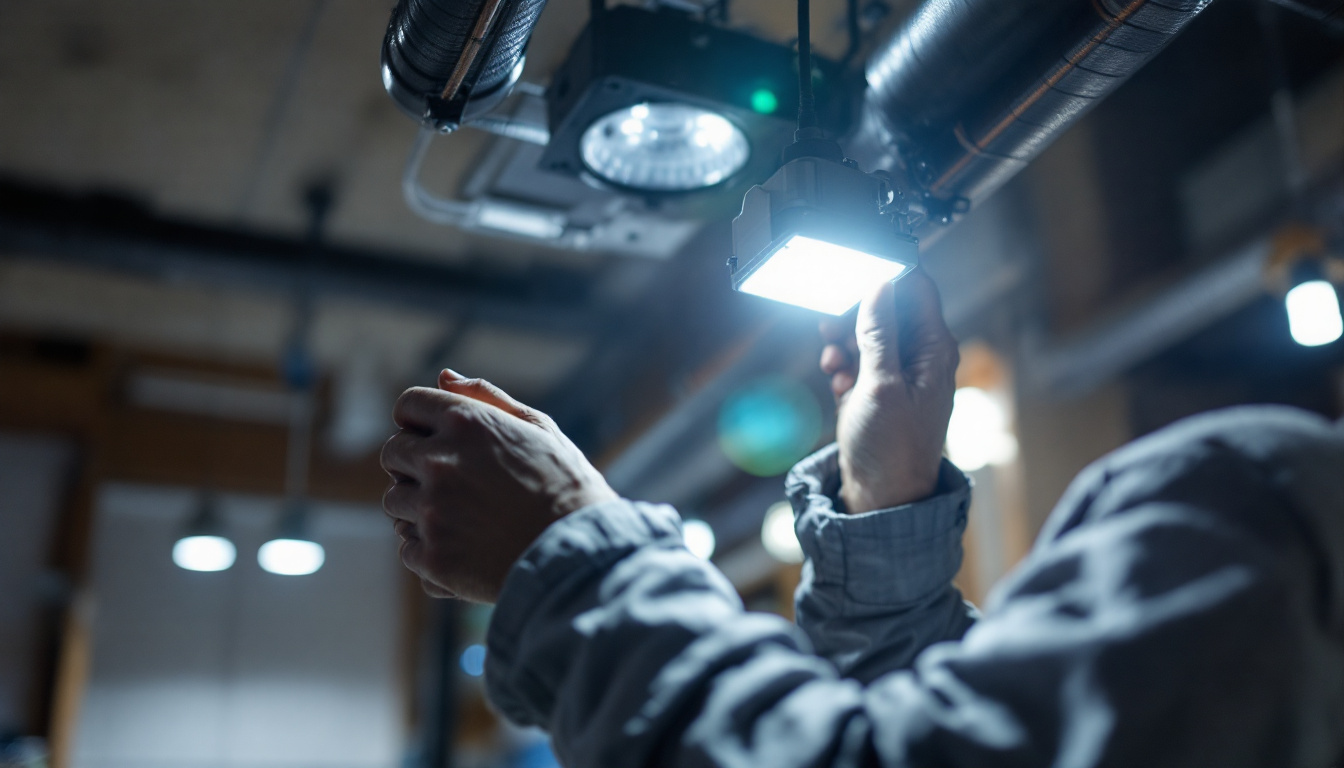
Three-way light switches are essential components in modern electrical installations, allowing for convenient control of lighting from multiple locations. For lighting contractors, understanding the intricacies of three-way switch systems is crucial for delivering quality service to clients. This article outlines a comprehensive checklist that covers everything from basic concepts to advanced installation techniques, ensuring that every contractor is well-equipped for the task at hand.
Before diving into the checklist, it’s important to grasp the fundamental principles of three-way switches. Unlike standard single-pole switches, which control a light fixture from one location, three-way switches enable control from two different points. This functionality is particularly useful in larger rooms, hallways, or staircases where multiple access points are needed. Imagine walking into a long hallway with lights at either end; having a three-way switch allows you to turn the lights on or off from either side, enhancing convenience and safety, especially during nighttime.
A three-way switch setup typically consists of two switches and a light fixture. Each switch has three terminals: one common terminal and two traveler terminals. The common terminal connects to the power source or the light fixture, while the traveler terminals connect the two switches. Understanding these components is vital for proper installation and troubleshooting. Additionally, the physical design of three-way switches can vary, with some featuring a toggle mechanism and others utilizing a rocker style. This variety not only affects aesthetics but can also influence user experience, making it essential to choose a switch that fits both functional and design preferences.
There are several wiring configurations for three-way switches, including the “switch leg” and “power at switch” methods. Familiarity with these configurations allows contractors to adapt to various installation scenarios. The switch leg method runs power from the switch to the light fixture, while the power at switch method brings power directly to the switch, creating a different wiring pathway. Understanding these configurations also opens the door to advanced setups, such as incorporating dimmer switches or smart home technology. For instance, integrating smart three-way switches can allow for remote control via smartphone apps, voice commands, or even automation based on time of day, providing an added layer of convenience and energy efficiency to your lighting system.
Having the right tools and materials is key to a successful installation. Below is a checklist of essential items that every lighting contractor should have on hand when working with three-way switches. Being well-equipped not only streamlines the installation process but also enhances safety and efficiency, allowing for a smoother workflow and minimizing the risk of errors.
In addition to the tools and materials listed above, having a good quality multimeter can greatly enhance your troubleshooting capabilities. This device allows you to measure voltage, current, and resistance, making it an invaluable asset when diagnosing electrical issues. Furthermore, a sturdy ladder may be required for installations that involve overhead fixtures or switches placed at higher elevations, ensuring that you can work safely and effectively. Always remember that investing in high-quality tools and materials not only improves the quality of your work but also contributes to your reputation as a reliable contractor in the field.
Moreover, familiarity with local building codes and regulations is essential for any contractor. Understanding these guidelines helps ensure that your installations are compliant, which can prevent costly rework and potential safety hazards. Keeping abreast of the latest trends in lighting technology, such as smart switches and energy-efficient options, can also set you apart from competitors, allowing you to offer clients innovative solutions that enhance their living spaces while being mindful of energy consumption. This knowledge can be a significant selling point, as homeowners increasingly seek to integrate technology into their everyday lives.
Installing three-way switches requires careful planning and execution. Below is a step-by-step guide to ensure a smooth installation process.
1. **Turn Off Power**: Before starting any electrical work, ensure that the power is turned off at the circuit breaker to prevent accidents.
2. **Identify Wiring Path**: Determine the best route for the wiring between the two switches and the light fixture. This may involve drilling holes or using existing conduits.
3. **Install Switch Boxes**: Securely mount the electrical boxes where the switches will be located. Ensure they are level and flush with the wall surface.
4. **Run Wires**: Use fish tape to pull the appropriate wires through the walls to connect the switches and the light fixture. Make sure to follow local codes regarding wire placement.
5. **Connect Switches**: Connect the wires to the switches following the manufacturer’s instructions. Typically, the common terminal connects to the power source, while the traveler wires connect to the traveler terminals.
6. **Connect Light Fixture**: Once the switches are connected, proceed to connect the light fixture, ensuring all connections are secure and properly insulated.
7. **Test the Installation**: After everything is connected, turn the power back on and test the switches to ensure they operate correctly. If the light does not function, double-check the wiring connections.
Even experienced contractors can make mistakes during installation. Here are some common pitfalls to watch out for:
Even with careful installation, issues may arise. Understanding how to troubleshoot common problems can save time and frustration.
When a three-way switch system fails to operate correctly, start by identifying the symptoms:
1. **Check Power Supply**: Use a voltage tester to ensure that power is reaching the switches.
2. **Inspect Connections**: Open the switch boxes and check all wire connections for tightness and proper insulation.
3. **Test Switches**: If one switch appears faulty, replace it and test the system again.
4. **Examine the Fixture**: If the problem persists, inspect the light fixture for any issues that may be affecting performance.
Safety should always be a top priority when working with electrical systems. Here are some important safety considerations for lighting contractors.
Wearing appropriate PPE is essential to protect against electrical hazards. This includes:
In addition to PPE, following electrical safety practices is crucial:
For contractors looking to enhance their skills, exploring advanced techniques can provide added value to clients and improve overall installation quality.
With the rise of smart home technology, integrating smart lighting systems into three-way switch setups is becoming increasingly popular. This allows homeowners to control their lighting remotely or through voice commands.
To implement smart lighting:
Incorporating energy-efficient lighting options, such as LED bulbs, can significantly reduce energy consumption and costs. When installing three-way switches, consider the following:
Three-way light switches are a vital aspect of modern lighting installations, offering flexibility and convenience for homeowners. By following this comprehensive checklist, lighting contractors can ensure successful installations that meet safety standards and client expectations. From understanding the basics to troubleshooting common issues, being well-prepared is key to delivering exceptional service.
As technology continues to evolve, staying informed about advancements in lighting systems will further enhance a contractor’s skill set and marketability. Embracing smart technology and energy-efficient solutions not only benefits clients but also positions contractors as leaders in the ever-changing landscape of electrical installations.
Ready to elevate your lighting installations with the best three-way switches on the market? Look no further than LumenWholesale, where we provide contractors with superior, spec-grade lighting products at unbeatable wholesale prices. Our extensive selection is designed to meet the highest industry standards, ensuring you get reliable, high-performance lighting for every project. Plus, with free shipping on bulk orders, you can stock up on quality lighting solutions without the worry of hidden fees or compromises. Don’t let inflated markups dim your business’s potential. Wholesale Lighting at the Best Value is just a click away. Experience the LumenWholesale difference today!

Discover the key US states leading the way in outdoor LED lighting.

Discover how choosing the right light bulb fixture can significantly enhance energy efficiency in your home.

Explore the science behind under counter LED lighting strips and discover how they can transform any space.

Discover the essentials of ballast lights with our comprehensive guide tailored for lighting contractors.